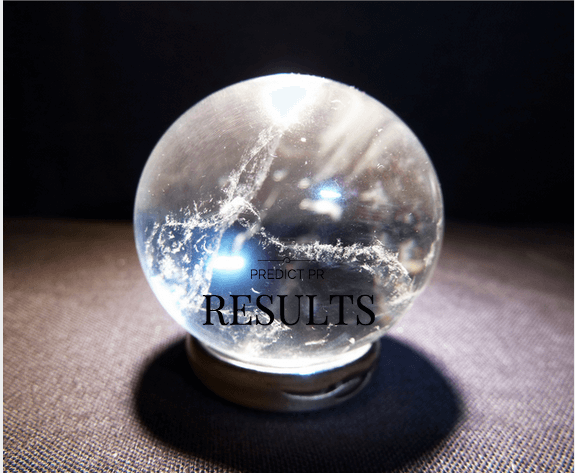PR measurement always makes PR pros squirm. So does math, unrealistic expectations, and “get me on Oprah!”
(Personally, I couldn’t have been happier when Oprah went off the air so clients stopped asking about getting on the show.)
But there’s one word that makes PR pros even queasier: Goal.
It’s not because we’re afraid of setting goals per se, but because there are so many unknowns in our jobs that can affect PR measurement, which starts with a clearly defined goal.
The longer you’ve been in PR, the more unknowns you’ve seen—from your go-to reporter bolting to a new publication, to breaking news, to your client changing the entire strategy overnight just before a big announcement.
Ultimately, many communicators feel that success is subject to too many variables for accurate PR measurement and thus, set realistic goals.
Fear Follows the Weather
This is followed by fear. Fear that clients might conclude the PR pro didn’t do their job right if they don’t reach said goals, regardless of those pesky unknowns.
In this regard, PR measurement is kind of like the weather and PR pros like the meteorologist. It might storm one day and be sunny the next, but you better believe the weatherman is always responsible for it.
If this sounds familiar, be aware that attitude doesn’t do your PR team or your clients any favors.
Sure, there are always unknowns, but they don’t change the fact that PR strategy follows predictable trends.
Ignoring those trends, which you likely already sense in your gut, almost always leads to mediocre PR.
Savvy PR pros identify those patterns and tailor their recommendations accordingly.
Here’s how you turn that gut instinct into data and do meaningful things with it, such as true PR measurement.
Turning Data into Insight
The first step in setting goals and creating PR measurement is establishing performance benchmarks. This might sound daunting at first, but it will become second nature once you start.
Make an effort to track specific variables of your efforts.
For instance, for a single PR campaign you might choose to track things such as:
- Type of campaign—product announcement, seasonable event, funding, etc.
- How many news “hooks” are included and what they are—subject matter expert, customer story, visuals, timeliness, etc.
- Who you pitched and how many follow-ups had to be made.
- Total time spent on campaign.
- What resulted from that effort—interviews, social shares, foot traffic, etc.
Try this with two or three campaigns and you’ll start to realize a healthy set of patterns before you know it.
They should start to tell you what mix of variables yield the biggest successes.
Gut Check Becomes Science
Remember that gut check you’ve been relying on all these years?
The patterns should start to line up with that.
You always knew, for instance, that VIP events at trade shows don’t get a huge win, now you’ll have the data to back that up.
I’m not gonna lie, doing this manually can be tedious, but the end result gives you so much power.
Your data will organically build very quickly, helping you predict the future by looking at the past.
It’s important to note here that trends really are consistent in public relations; there’s no such thing as a fluke.
While some failures or successes might seem mysterious, there’s always a reason behind them, even if it’s not obvious.
Once you begin collecting data, those reasons will be revealed.
Predict Results with PR Measurement
Here are a few reasons why mapping goals—and subsequently your PR measurement—to PR trends helps you succeed:
- It makes results more predictable. If you understand trends, you won’t go off in the wrong direction or launch ill-fated programs; you’ll be able to anticipate and sidestep black holes, while pursuing the best options for success. You’ll also interpret your results accurately and know when your team has performed well and when they’ve missed the mark.
- They help you set realistic expectations with clients and stakeholders. All clients have a wish list, such as top-tier media coverage or prestigious industry awards. Depending on the client’s experience, the items on that list can range from plausible to unlikely. By understanding trends and setting achievable, measurable goals, you and your clients can define success in advance and avoid misunderstandings down the road.
- Your team is galvanized to really deliver on their promises. Brainstorming ideas for clients is always fun, but eventually there comes a time when the team needs to push past obstacles and get the work done. A scorecard of defined goals will inspire teams to work through challenges and deliver on their promises within a specific timeframe.
- You can demonstrate your expertise to clients. One of the worst mistakes a PR professional can make is letting a client move the success goalposts. By setting and hitting concrete goals based on data, your hard work and skill is that much clearer to the client, who will have to admit you hit the target.
I’ll close with this: As the saying goes, a goal without a deadline is just a dream.
In a fast-moving industry such as PR, we can’t afford to let any kind of misstep go on for too long.
It’s our job to spot the gaps, close them, and keep moving toward that ultimate success that thrills our clients.
By monitoring trends, predicting results, and creating better PR measurement, we become that much faster and stronger in crossing the finish line.
It’s the most surefire strategy I know for keeping clients happy.
